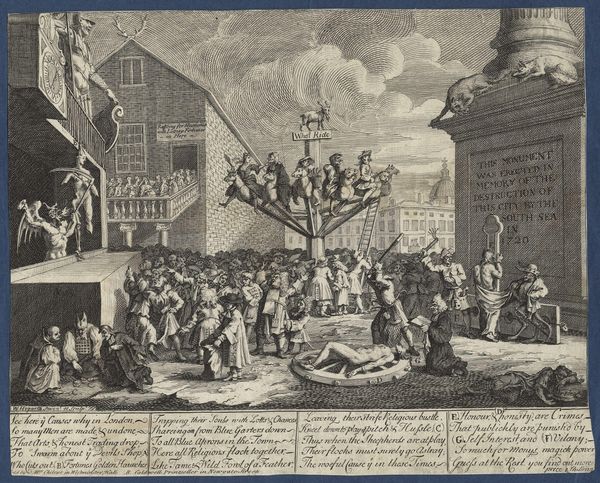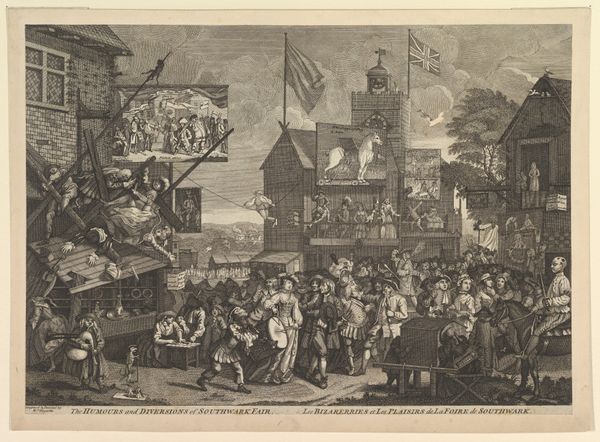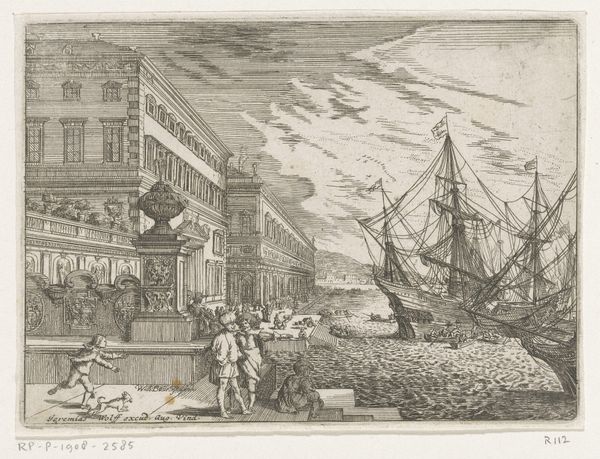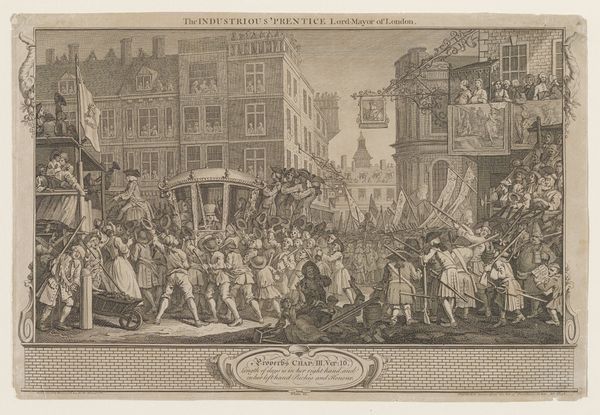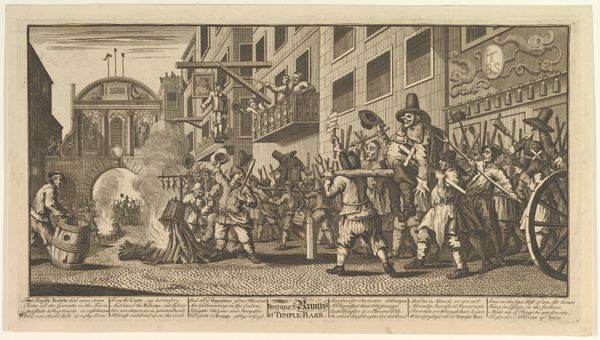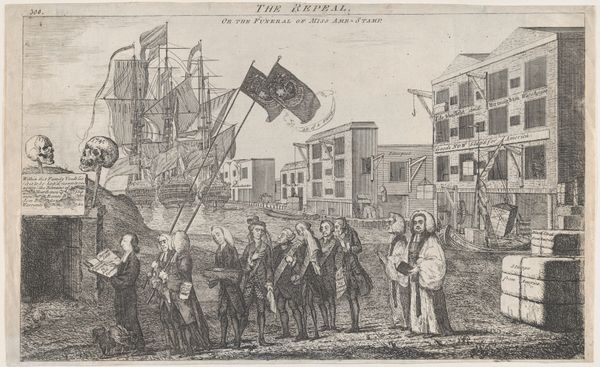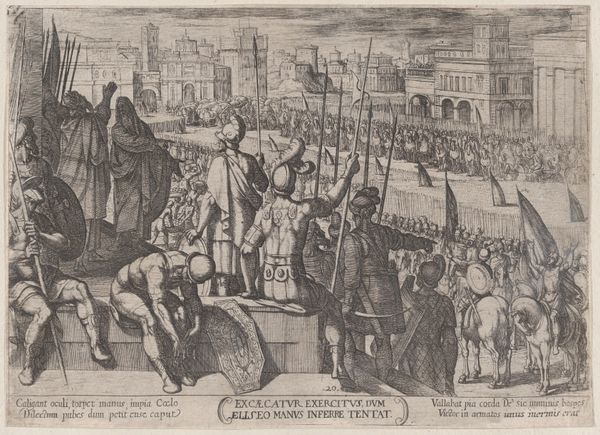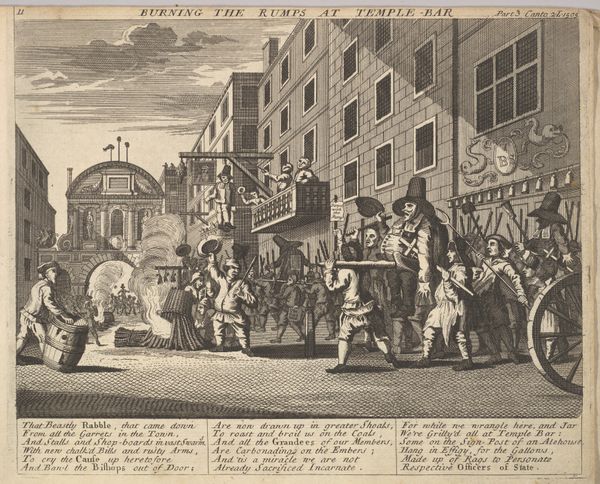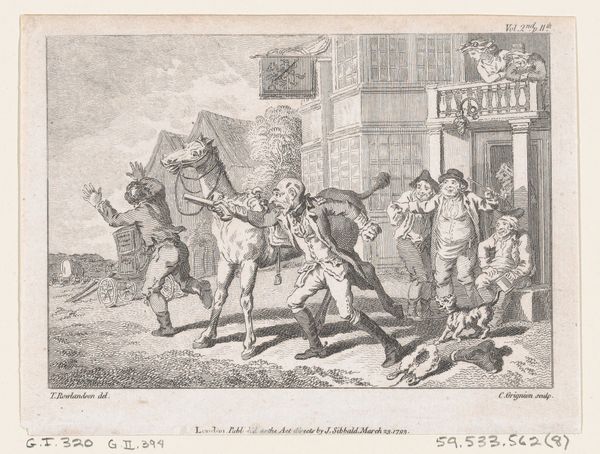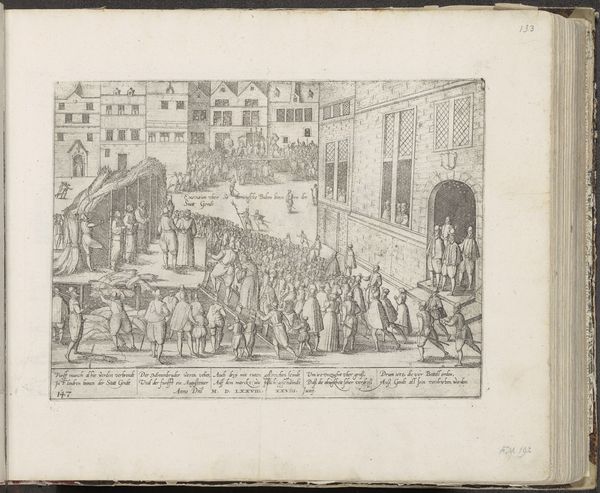
drawing, print, engraving
#
drawing
# print
#
caricature
#
15_18th-century
#
history-painting
#
engraving
Dimensions: plate (trimmed): 4 5/16 x 6 3/4 in. (11 x 17.1 cm) sheet: 4 3/8 x 6 15/16 in. (11.1 x 17.7 cm)
Copyright: Public Domain
Curator: This engraving, entitled "The Repeal, or the Funeral of Miss Ame Stamp," was created anonymously in 1766. It is currently held here at the Metropolitan Museum. Editor: It's bleak, almost gothic, don't you think? The crosshatching creates a very somber mood, as if witnessing a grim procession into the underworld. Curator: The scene depicts the symbolic funeral of the Stamp Act, a piece of British legislation that levied direct taxes on the American colonies, a pivotal moment of political and social friction, which affected even the cultural milieu. The Act lasted for just one year. Editor: Yes, I see the coffin labeled "Miss Ame Stamp." And note how it’s being escorted to a tomb displaying the year 1766 along with skeletal figures and shipping iconography! Death and renewal depicted as both intertwined and oppositional. What persistent hopes are encapsulated in these symbols? Curator: This print represents a specific historical conflict that resonates through to our understanding of colonial resistance, transatlantic trade, and the evolving relationship between Britain and America. Look at the figures marching, appearing defeated, signifying those impacted. It suggests the socio-economic unease rippling outwards through these specific bodies. Editor: The detail is really compelling! The warehouse signs mentioning Sheffield and Birmingham suggest how the economic interests of these cities align with the depicted event. These would've been understood symbolical by viewers during that era and understood just by reading certain references to them and even by the design aesthetic employed by its anonymous author. Curator: Exactly. We should also highlight the visual rhetoric utilized in the creation of this print, for whom were these symbolic images composed? Were these common visual short hands understood among wide swaths of audiences? Editor: And this points to a further question of how power manifests symbolically through visual form! A vital piece in piecing together history's more complex components. Curator: Ultimately, a careful decoding shows an interesting chapter in colonial America. Editor: This image remains powerful for exploring the complexities between economics, class, and rebellion, both then and perhaps now, even.
Comments
No comments
Be the first to comment and join the conversation on the ultimate creative platform.
